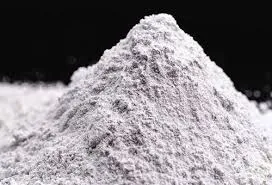
feb . 16, 2025 17:00 Back to list
hydroxyethylcellulose for sale


For the oil and gas industry, hydroxyethylcellulose serves as a key component in drilling fluids. Its water-retentive and viscosity-modifying properties enable it to form gels that help control the viscosity of drilling fluids, enhancing their effectiveness in transporting cuttings and preventing fluid loss into underground formations. This contributes to more efficient drilling operations and reduces the environmental impact by minimizing waste and unnecessary fluid usage. Moreover, hydroxyethylcellulose has found applications in paper manufacturing, where it serves as a retention aid, helping to maintain the uniform distribution of fibers and fillers during the paper-making process. This not only improves the quality of the paper but also enhances its mechanical properties, making it more durable and suitable for various applications. Despite its wide array of uses, hydroxyethylcellulose is generally regarded as a safe and environmentally friendly product. Its biodegradability and non-toxic nature further enhance its appeal across industries that prioritize sustainability and eco-friendliness. The manufacture and quality control of hydroxyethylcellulose require a meticulous approach to ensure that it meets the stringent quality standards demanded by its diverse applications. Manufacturers invest heavily in research and development to optimize its properties and develop new formulations that meet emerging needs. In conclusion, hydroxyethylcellulose stands as a testament to the versatility and adaptability of polymer-based substances. Its wide range of applications underscores its importance as a multipurpose ingredient that continues to meet the evolving demands of modern industries. As technological advancements and consumer preferences evolve, the role of HEC will likely expand, driven by ongoing research and innovation, ensuring its continued relevance and indispensability in a rapidly changing world.
-
Unlocking the Benefits of HPMC Products: A Gateway to Versatile Applications
NewsAug.07,2025
-
Unleashing the Potential of HPMC Ashland: A Comprehensive Look
NewsAug.07,2025
-
Tile Bonding Cellulose: The Key to Superior Adhesion and Durability
NewsAug.07,2025
-
Hydroxypropyl Methylcellulose Powder: The Versatile Component in Modern Pharmaceuticals
NewsAug.07,2025
-
Hydroxyethyl Cellulose: The Versatile Solution for Various Industries
NewsAug.07,2025
-
Hydroxyethyl Cellulose (HEC): The Versatile Polymer for Various Applications
NewsAug.07,2025







